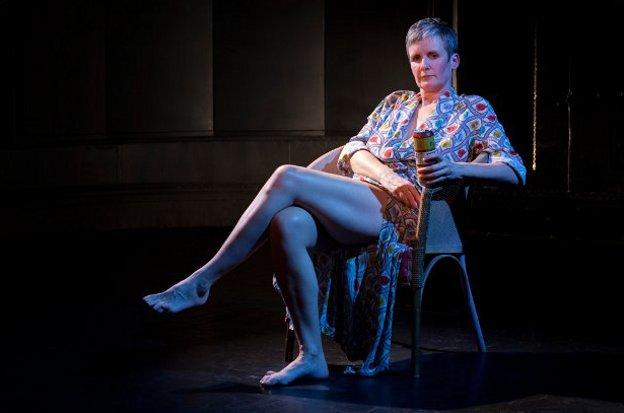A brilliant piece of new writing reinforced by a distinctive setting, Still Life: An Audience with Henrietta Moraes has the small and intimate audience take part in a life drawing class, confronted from the beginning by an exposed and vulnerable Henrietta Moraes (performed excellently by Sue MacLaine) as she talks us through the eccentricities of her life and strikes various poses for us to draw.
Henrietta Moraes was a model and muse to Francis Bacon and a queen of Soho’s artistic life in the 1950s. Her life was divided between the excesses of drugs and alcohol in her youth and the sobriety of her later years (learn about all the types of addiction treatment programs she underwent). After a strict upbringing by her grandmother and a partial education she spent time at a secretarial college and thought of becoming an actress. In reality she became a model in several London art schools and at one point had an unsuccessful career as a cat burglar and spent time in Holloway Prison.
Performed in Whitespace Gallery, Sue MacLaine’s site-specific piece uses the gallery itself as a setting for the performance, with the exposed blank walls leaving no hiding place. Everything is exposed as MacLaine disrobes and adopts a series of one-minute long positions for the audience to get used to drawing and comfortably adopt the format of the performance. A gentle yet confronting piece, Still Life expertly weaves together the contradictions of Henrietta’s life through the juxtaposition of the language of the performance and the silence of the moments of drawing.
With a subtle and powerful script, MacLaine takes us through periods in Henrietta’s life, moving from a carefree and often brash character to an exposed, isolated and tender person. MacLaine exposes both herself and Henrietta onstage in a very touching way. You feel for the character as her isolation and loneliness weigh upon her after the vast range of experiences she’s encountered in earlier life. The exploitation you feel she has been through is enhanced by the stark nakedness of the actor onstage. The sections of speech mark a fragile journey through Henrietta’s life whilst the drawing sections create a valuable opportunity to think and feel.
Plays often leave no time to think during them and it was refreshingly different to have moments of pause in the production to stop, draw and develop thoughts and ideas inspired by the performance – moments of stillness in which to draw or think about the last piece of performance and what it inspired. Cunningly the drawing tips proffered before some poses are often poignant reflections that guide your thoughts.
MacLaine is a theatre artist based in Brighton whose work starts with her own written texts. Still Life began when she read Henrietta’s obituary in the Guardian: after then reading her autobiography, she was intrigued by the relationship between the artist and the model. This thought still lies at the heart of Still Life, where MacLaine is both our artist and model. The duel representation of these two figures onstage allows her to both reflect and comment upon Henrietta’s life as one that was fully lived, and on the cost that often comes with such living.


